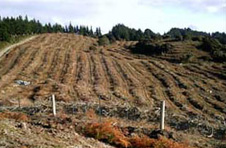 1. Gorse windrows at Wangaloa
1. Gorse windrows at Wangaloa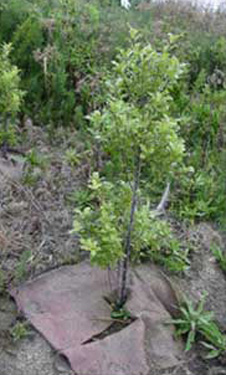 2. Healthy pittosporum seedling at Wangaloa. Wollen collars were wrapped around seedling stems at the time of planting to reduce weed invasion/competition.
2. Healthy pittosporum seedling at Wangaloa. Wollen collars were wrapped around seedling stems at the time of planting to reduce weed invasion/competition.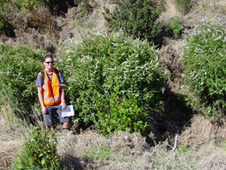 3.Healthy native plantings in 2007
3.Healthy native plantings in 2007
Prior to rehabilitation, exotic gorse Ulex europaeus, native manuka Leptospermum scoparium, and Pinus radiata dominated the vegetation cover at Wangaloa. Native vegetation cover was confined to mainly small and isolated patches. All plant growth on the pallic soils was dense and extensive, whereas growth on the overburden was particularly sparse. Earlier attempts to establish P. radiata had resulted in unhealthy and stunted individuals showing toxicity and macro-nutrient deficiencies.
Following initiation of the rehabilitation project, gorse has been removed and wind rowed (see photo right) with the aim of providing organic matter and shelter for establishing natives. Most of the other exotic plants have also been cleared, and replaced with over 60,000 native seedlings, planted in the winter of 2003.
During the revegetation process, there was no augmentation of the substrate, although each seedling was planted with a dose of slow release fertiliser.
Fences have been built around the perimeter of the site in an attempt to exclude possums and rabbits, to increase the chances of plant survival.
Revegetation of overburden using indigenous plants
Hundreds of thousands of nursery-reared seedlings have been planted at the mine site since the middle of 2003. A number of different species were used, mostly indigenous trees and shrubs that occur naturally in the region. The success of seedlings in the overburden is of particular interest because establishing a plant cover will help mitigate other environmental problems, such as overburden erosion and acidity.
At Wangaloa, Hebe and Toetoe seem to have survived better than any other species ('Seedling Survival' Graph shown below). Manuka seedlings had the lowest survival rate but they were the biggest plants in 2006, over 1 m tall on average ('Seedling Height' Graph shown below). Manuka also readily establishes itself in overburden from surrounding seed sources, which makes us think this species is particularly important for ecosystem recovery at the mine site.
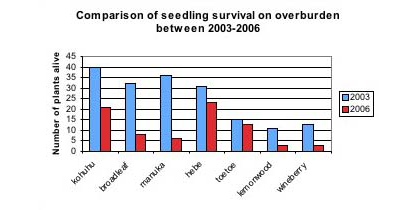
Revegatation at Wangaloa Seedling survival
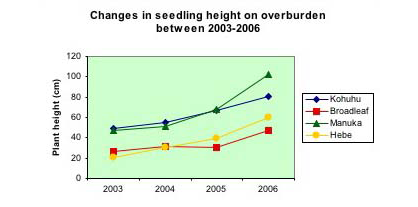
Revegatation at Wangaloa Seedling height
Revegetation in 2011
After 7 years of planting, replanting and spray maintenance, a significant native vegetation cover has developed. The most successful plantings are on a loess substrate, and these are now essentially self-sufficient and self-propagating. Quartz-rich substrates have lower nutrient contents, and plants have more difficulty establishing. Small areas with coal-rich substrates have had poor success from the planting regime, but natural encroachment by local manuka and kanuka is helping to establish a vegetation cover.
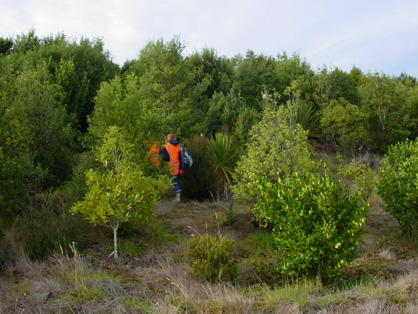
Native plantings on the eastern overburden (locally quartz-rich), Wangaloa mine, 2011
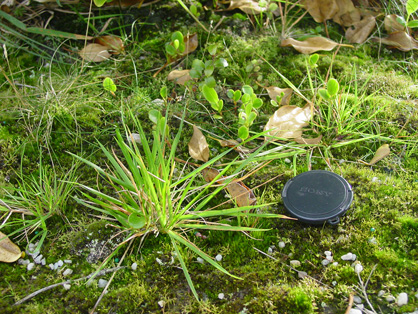
Newly-sprouted seedlings of broadleaf (Griselinia littoralis) in moss beneath a two metre high planted broadleaf shrub. Scattered white quartz pebbles attest to the quartz-rich substrate beneath the moss.

Native plantings on the eastern overburden (locally quartz-rich), Wangaloa mine, 2011
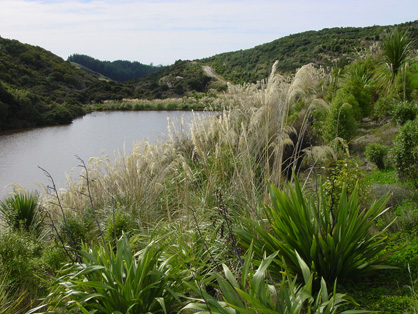
Native plantings on quartz-rich overburden beside the Main Lake, 2011. Vegetation on left side of the lake developed naturally during and after mining. Distant pine plantation is outside the mine site.
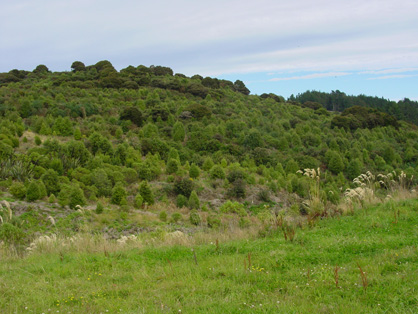
Native plantings on loess-covered hillside, 2011. Clusters of taller kanuka and manuka (dark green) are islands of vegetation that developed naturally before the current revegetation programme, and were preserved through the rehabilitation activities. Foreground grassland was established via hydroseedingon quartz rich overburden.
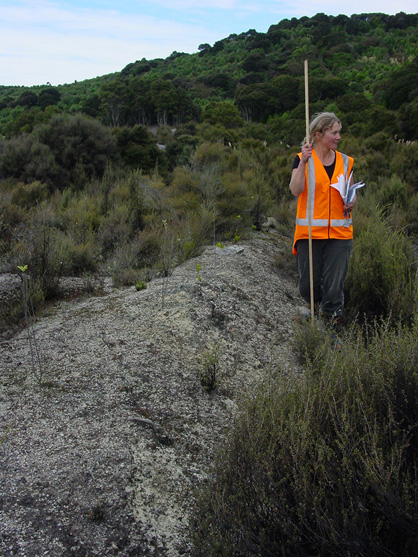
Coal-rich overburden has still resisted revegetation in 2011, but self-seeded manuka, from local relict islands (in background), is encroaching on remains of bare ground.
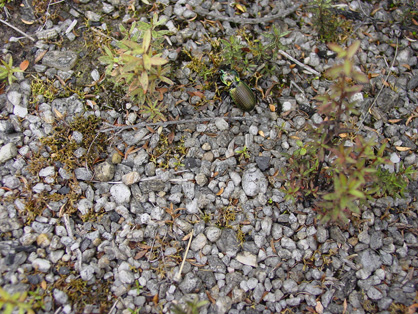
Self-seeded manuka seedlings are sprouting from quartz-rich overburden in 2011. Beetle (top centre) is 2 cm long.
Related
Closed Coal Mine - Wangaloa Coal Mine
- Introduction
- Acid Mine Drainage and pH
- Soils
- Revegetation
- Invertebrates
- Natural Development of ecosystems
- Water Quality
- Bibliography